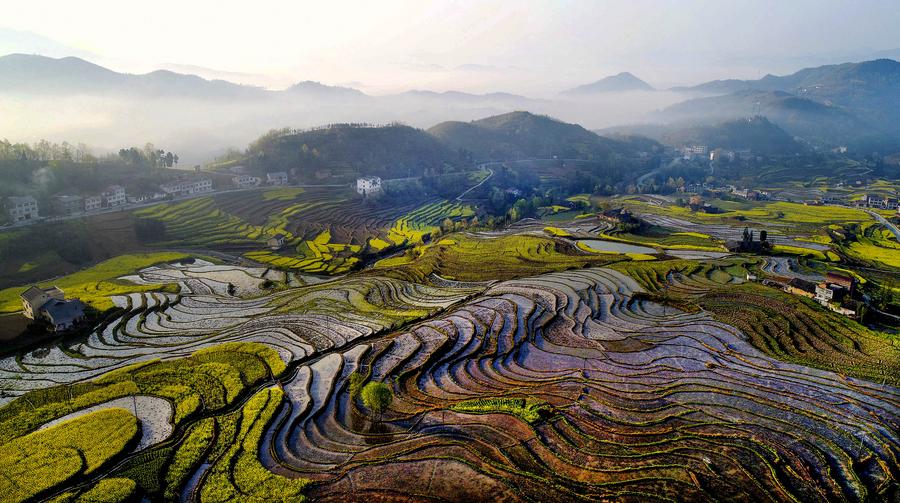Four Chinese irrigation projects granted world heritage status

Four ancient Chinese irrigation sites were honored on Tuesday as World Heritage Irrigation Structures (WHIS), according to the Ministry of Water Resources.
Granted by the International Commission on Irrigation and Drainage (ICID) during the 75th International Executive Council Meeting, the inclusion of the four irrigation projects has brought the total number of Chinese irrigation projects on the list to 38.
The four newly enlisted heritage projects include the Karez Wells in Turpan of northwest China's Xinjiang Uygur Autonomous Region, the Huizhou Weirs in east China's Anhui Province and the Wuyuan Weirs in east China's Jiangxi Province (joint application), the Fengyan Terraces in Hanyin County, northwest China's Shaanxi Province, and the Jufeng Weirs in Xiushan County, southwest China's Chongqing Municipality.
The Karez Wells in Turpan of Xinjiang Uygur Autonomous Region are ancient irrigation projects created to draw shallow groundwater for irrigation to adapt to the local conditions of extreme drought and high evaporation. The Karez Wells have a history of over 600 years and currently still irrigate about 6,667 hectares of farmland.
The Huizhou Weirs in Anhui Province consist of more than 500 weirs with five boasting a long history of over 500 years. The Wuyuan Weirs in Jiangxi Province have 1,181 weirs with a history of over a century. These ancient weirs contain profound historical, cultural and aesthetic value.
With an irrigation area of around 3,467 hectares, the Fengyan Terraces in Shaanxi Province were built on steep slopes and have sound irrigation and ecological systems.
Established during the Qing Dynasty, the Jufeng Weirs in Xiushan County in Chongqing Municipality are efficient models of ancient irrigation works in mountainous regions.
The WHIS designation, established by the ICID in 2014, aims to protect and promote irrigation projects of historical value and scientific experience. The WHIS list now covers 177 projects from 20 countries.
